Bonsai Diagrams for Dorling Kindersely/Penguin
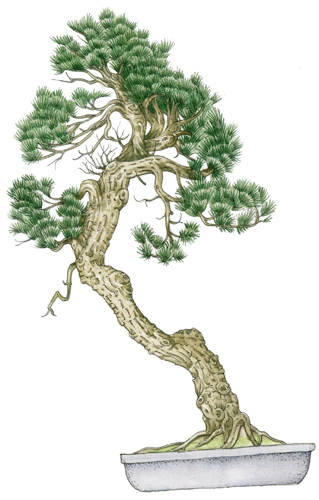
Bonsai Project
I’m currently doing a series of botanical illustrations for a book on Bonsai trees by Peter Warren for Dorling Kindersely/Penguin Books. We’re concentrating on coloured diagrams of the trees. There may also be some step-by-step illustrations, and there’s talk of Japanese style “icons” too.
A note on copyright
Unusually for me, I’ve allowed DK/Penguin the copyright on these illustrations. Such a decision is never taken lightly. In this case it relates to the client’s budget which justified such a rash move. As a general rule of thumb, NEVER sell your copyright to a comisioner. Nine times out of ten they neither need it nor understand what it means.
Testing different mediums for illustrating the Bonsai trees
First, I had to be vetted to see whether or not my illustration style was what the designer was after. It also gave me a chance to experiment with different approaches to the subject. We chose one of the bonsai trees to be illustrated, and I completed two illustrations of the same image. The first was pen and ink. I like Pigma Micron pens, 0.05 tips, among other brands. This was overlaid with a light watercolour wash. I use Winsor and Newton paints and their Series 7 sable brushes. The second approach was pure watercolour, without any pen.
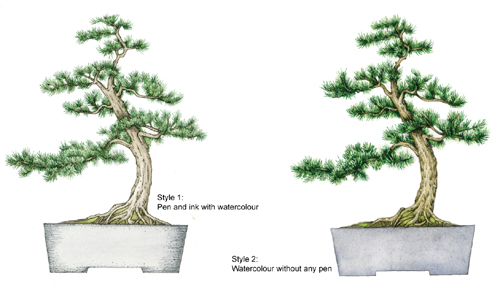
The choice is made!
The designer preferred style 1, with the pen. So did I. She’s been amazing at providing reference and feedback. It was a matter of hours rather than days before I had the go-ahead to work up more of the trees to final.
The trick is to keep the pen detailing to a mimimum. Too much stippling will drown the image, too little will leave it looking unfinished.
Cascade Bonsai
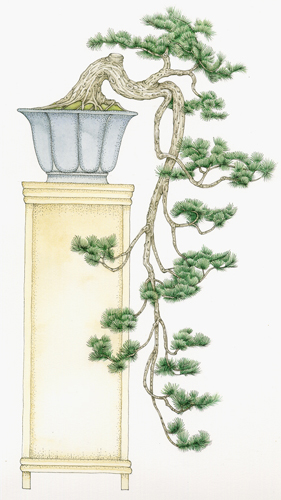
Quick and light paint strokes help give the conifer the fluffy feel. I made careful colour notes on the test piece to ensure I could mix up a consistent colour for each tree that needed illustrating. Above is the “cascade” style. Below, there’s the “semi-cascade”.
Semi-cascade Bonsai
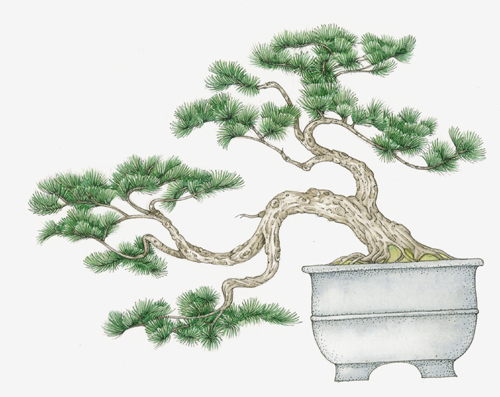
Windswept Bonsai
The trickiest thus far was the “windswept”, because it was hard to figure out where the roots were, and what substrate they grew on. With help from the designer and the author, we untangled the roots from the stones, and the stones from the dead wood.

Here’s the final:
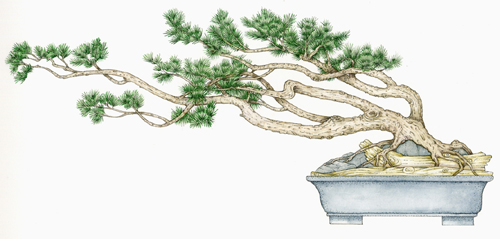
Slanting Bonsai
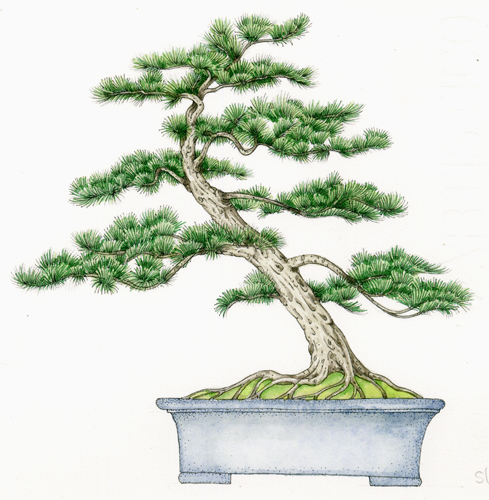
This is the slanting form of the tree.
Formal Upright
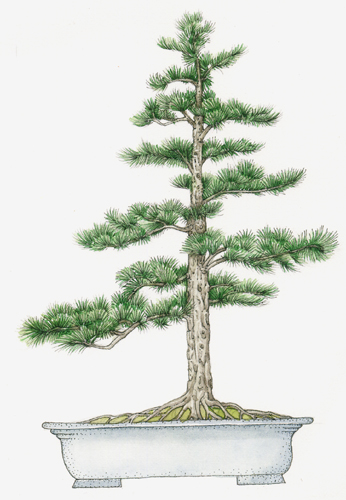
Broom Bonsai
After a lot of debate with the designer and the author, we decided to illustrate the “broom” style without leaves or, as the experts put it “naked”. This was the hardest thus far as I had to continue trying to make the illustration seem elegant, yet be sure to show the tiny thin ends of each and every branch.
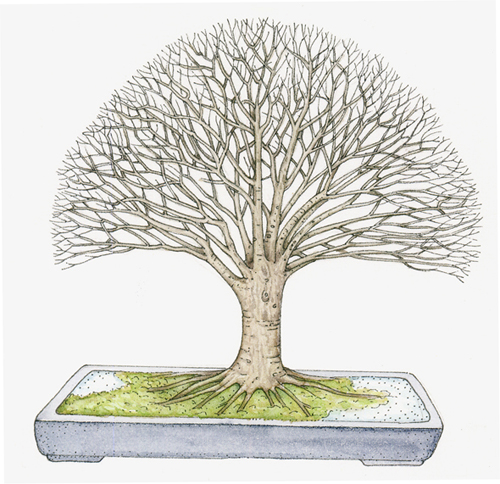
There are other styles which I really liked:
Forest
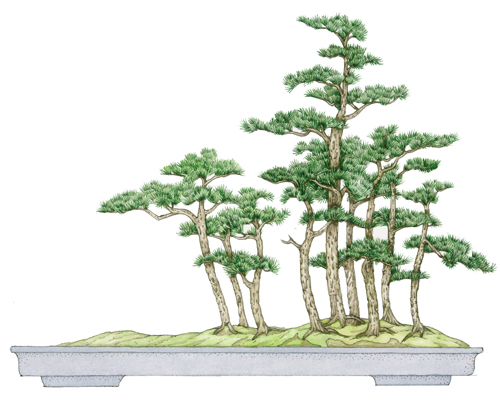
Literati Bonsai

This one’s “literati”, and is based on an incredibly famous tree. I seem to have scanned it in so the pot’s at a very jaunty angle, apologies.
Keshki Bonsai
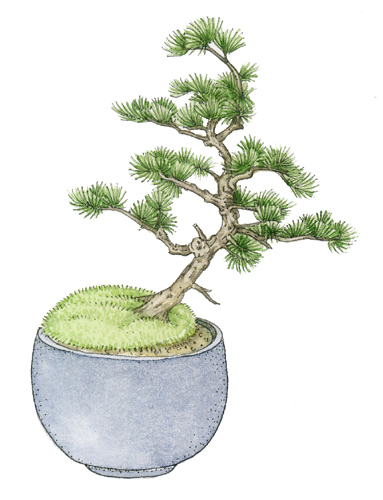
Root over rock
Finally, there’s the “Root over rock” which was tricky to illustrate but is rather a beautiful plant.
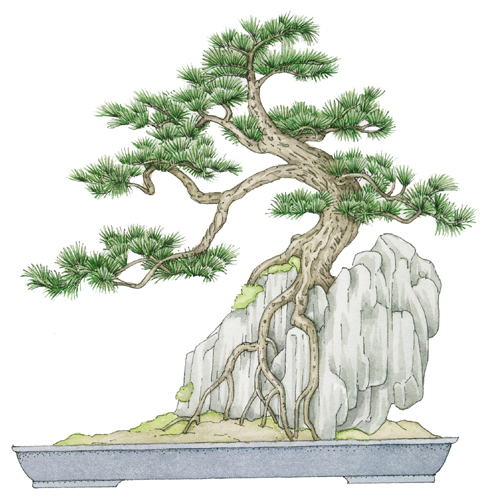
One thing I wasn’t expecting to come out of this job was a growing interest in bonsai. I now have affection for the bonsai tree. I think they’re exquisite, and now I know a little of the painstaking work that goes into creating them I’m even more impressed by them.

